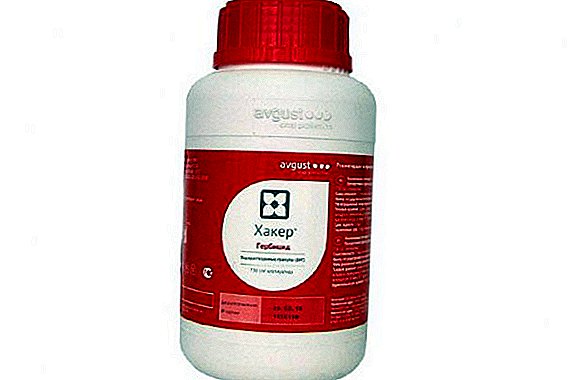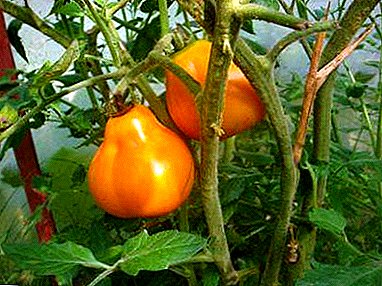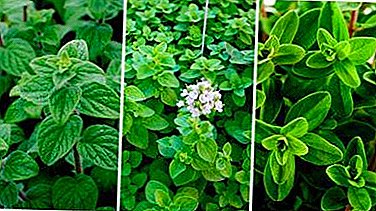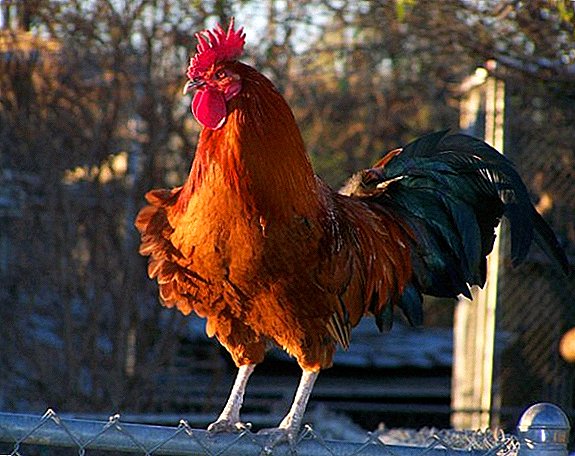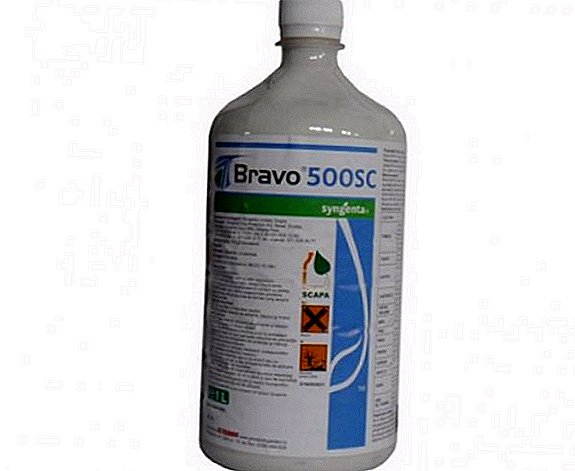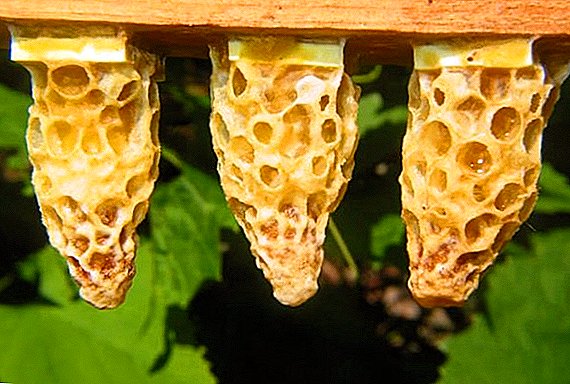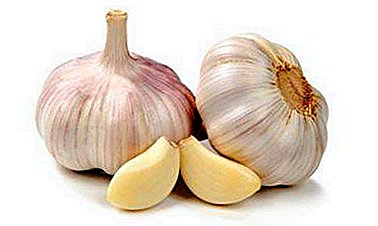 Argemona is a rather rare, aesthetically attractive herbaceous plant that looks like a traditional poppy. It has an incredibly beautiful, quivering cups of flowers, luxurious leaves with a metallic sheen and a delicate, unique aroma. However, despite its external fragility, you can’t call a flower harmless, because there are numerous spines on its leaves and cups. What else hides the unpredictable argamone, let's figure it out.
Argemona is a rather rare, aesthetically attractive herbaceous plant that looks like a traditional poppy. It has an incredibly beautiful, quivering cups of flowers, luxurious leaves with a metallic sheen and a delicate, unique aroma. However, despite its external fragility, you can’t call a flower harmless, because there are numerous spines on its leaves and cups. What else hides the unpredictable argamone, let's figure it out.
Flower description
Argemona is a herbaceous perennial (sometimes annual species) plant of the Poppy family, native to North and Central America. To date, there are over 32 species of culture, most of which grows in Mexico.
The Makanov family also includes meconopsis, papaver, pioniform, opium and oriental poppies.
The peculiarity of the flower is its long flowering and unique in appearance, a very beautiful flower with high decorative properties. In height, the plant can reach up to 45 cm, some of the species are able to grow up to one meter. Argemon is characterized by a rather strong, fleshy stem, large leaves of a gray color with a metallic sheen.  The most remarkable part of the plant is its tender, slightly delicate, fragile white flowers, similar to the flowers of the classic poppy. In size, they can reach up to 10 cm. On the calyx of the flower, foliage, and multi-seeded boxes (fruits) there are a large number of spines.
The most remarkable part of the plant is its tender, slightly delicate, fragile white flowers, similar to the flowers of the classic poppy. In size, they can reach up to 10 cm. On the calyx of the flower, foliage, and multi-seeded boxes (fruits) there are a large number of spines.
Argemona has a unique and unusual aroma that is difficult to confuse with others. It is not very strong, it has unsurpassed sweet-sweet notes that charm and attract butterflies and honey-bears.
Check out the list of the best plants of honey plants.
Another important advantage of the plant is its long flowering, which lasts from the beginning of summer to frost. It is noteworthy, but it is able to withstand low temperatures down to -10 ° C at night, but under the condition of a positive temperature in the daytime.
The only disadvantage of culture is the “scarcity” of coloring, because its color gamut is limited to several shades: from white to pale yellow.
Types and varieties of argemon
There are over 30 types of argémon, but only eight are used in gardening. It should be noted that in the post-Soviet countries the plant does not have a large distribution, and only four species can be found in garden plots.
Did you know? In European countries, argemona appeared only at the end of the XIX century, but quickly managed to gain popularity among gardeners, thanks to its amazing decorative properties and aroma, which no other garden culture has.
Argemona grandiflora
 This type of argemon got its name due to large flowers that can reach up to 10 cm in diameter. The color of flowers is white or pastel-beige, very delicate, with salad tones inside the box. In addition, the features of the large-flowered species are considered dense foliage, large shoots, dissecting up to half of the stem and decorated with white veins, harmoniously emphasizing the stunning silver flow of the leaves.
This type of argemon got its name due to large flowers that can reach up to 10 cm in diameter. The color of flowers is white or pastel-beige, very delicate, with salad tones inside the box. In addition, the features of the large-flowered species are considered dense foliage, large shoots, dissecting up to half of the stem and decorated with white veins, harmoniously emphasizing the stunning silver flow of the leaves.
They recognize the large-flowered argemon by its characteristic yellow juice, which stands out on the cut of the stem.
Argemona Mexican
 The smallest member of the species is Argemona Mexican, whose growth almost never exceeds 45 cm. In most cases, the plant grows up to 30 cm. The culture has small bright green leaves with a metallic sheen and numerous spikes on the underside of the leaf, as well as yellow or orange-yellow flowers with a diameter of up to 5 cm. A distinctive feature of this species is the presence of a bluish wax coating that covers the leaves and stems of the plant.
The smallest member of the species is Argemona Mexican, whose growth almost never exceeds 45 cm. In most cases, the plant grows up to 30 cm. The culture has small bright green leaves with a metallic sheen and numerous spikes on the underside of the leaf, as well as yellow or orange-yellow flowers with a diameter of up to 5 cm. A distinctive feature of this species is the presence of a bluish wax coating that covers the leaves and stems of the plant.
Flowering Mexican Argemon starts from mid-June.
Argemon wide
 Argemon is considered to be the most prickly, but, at the same time, the most quivering and touching. It grows up to 45 cm. A fleshy, dense stem adorns a number of beautifully gray leaves, among which grow 10-cm dazzlingly white, in some representatives pink, flowers that have slightly trampled petals and pale yellow stamens.
Argemon is considered to be the most prickly, but, at the same time, the most quivering and touching. It grows up to 45 cm. A fleshy, dense stem adorns a number of beautifully gray leaves, among which grow 10-cm dazzlingly white, in some representatives pink, flowers that have slightly trampled petals and pale yellow stamens.
Flowering plant, starting from mid-June until frost. The main value of this species is considered to be the original, unlike anything, flower scent and its abundant bloom.
Argemon white
 The most powerful, tall and large representative of the argémon is considered to be a white argemon, whose growth can reach up to 1 m. The plant is characterized by a thick and fluffy mass of shoots adorned with thick, prickly leaves of a bluish gray. The culture flowers are rather large, about 6 cm, have a cupped shape, there are exclusively white colors.
The most powerful, tall and large representative of the argémon is considered to be a white argemon, whose growth can reach up to 1 m. The plant is characterized by a thick and fluffy mass of shoots adorned with thick, prickly leaves of a bluish gray. The culture flowers are rather large, about 6 cm, have a cupped shape, there are exclusively white colors.
Did you know? Each flower argemon on a plant lives only one day. The day after flowering, it disappears, but in its place in a short time there is a new instance. When the weather is cloudy, the flower does not fully bloom and may remain in this form for several days, until the onset of bright pores.White argemon starts its bloom in late June-early July.
Growing argemons
Argemona looks very gentle and touching flower, while it is absolutely unpretentious in the care and cultivation. Prefers open space and clean air, rather than living in conditions of the room. In order for a flower to enjoy its exclusive appearance for a long time, it is necessary to create optimal conditions for it.
Lighting
Argemona belongs to heat-loving and light-loving plants, therefore, when searching for a place to plant it, it is recommended to give preference to sunny areas where nutrient, well-moistened and loose soil prevails.
Important! It is strictly forbidden to plant a plant on heavy, too acidic and salty soils, with a high rate of humidity, otherwise it will not take root and die.
 An ideal place for planting is a loamy, sandy and drained soil with a neutral level of acidity. It is not afraid of any drafts, or winds, or dry weather.
An ideal place for planting is a loamy, sandy and drained soil with a neutral level of acidity. It is not afraid of any drafts, or winds, or dry weather.
Temperature
Despite its delicate and defenseless appearance, the argemon is not afraid of cold weather, so you do not need to cover it for the winter. In addition, it is resistant to temperature extremes, does not suffer from spring and winter frosts. Moreover, it continues to bloom even at night temperatures of -10 ° C.
Humidity and watering
Argemona - a plant that loves moisture, but at the same time, it negatively tolerates its excess. Culture needs regular, moderate moisture, which can be determined by the level of drying of the upper layer of the soil. It can cope well with drought, but does not tolerate stagnant moisture. The plant should not be planted in lowlands, ravines, crevasses, i.e. in places where there is a likelihood of water stagnation or high levels of groundwater.
The plant is perfectly adapted to drought and frost, can withstand rapid temperature extremes. 
Fertilizer
Favorable and long-term flowering plants can provide regular fertilization. It is recommended to use complex or mineral agents in their quality. On moderately fertile soils, it is enough to apply one dressing with mineral fertilizers throughout the season, on poor ones - up to three.
Reproduction and transplanting
Argemon is propagated only by the seed method. Agrotechnics of growing a new plant is quite simple, the main difficulty is not to damage the root system of the seedlings. The roots are not only forbidden to disturb, you can not even touch the earthen room, located around the root system. It is because of this that it is preferable to sow the seeds not for seedlings, but directly into the soil. But even with this planting, it is recommended to treat the seeds as seedlings.
The process of landing argemon begins in early May. Since the seeds are rather large, it is enough to sow four pieces in one well and cover them with soil up to 1.5 cm above. Between the holes, you need to keep a distance of 20-25 cm.  Seed box
Seed box
If planting argemons is carried out by means of seedlings, then one should always remember that it is strictly forbidden to touch an earthen room. It is best to use peat pots, which make it possible not to touch the substrate at all. Seedlings are planted in previously harvested holes, not forgetting about the abundant moisture of the soil.
Important! In order for the plant to germinate faster, it is necessary to loosen and dig up the soil, remove weeds before planting the seeds.
If the plant is planted in early May, then the first flowering can be expected around July. 
Diseases and pests
Argemon are not afraid of various diseases and pests. It is not susceptible to any of the diseases and will be able to grow and bloom beautifully on flowerbeds infected with insects. The only thing the culture is afraid of is an excess of moisture, at which its root system begins to rot, which ultimately leads to the death of the whole flower.
Difficulty breeding argemons
Argemona is the most unpretentious and grateful perennial, which is not harder to grow than other garden crops. However, difficulties may arise related to:
- a transplant - the root system of the plant is rather fragile and sensitive, it is very rarely restored after transplantation, therefore, experts recommend handling;
- watering - excessive moisture, the presence of standing water in the soil are the cause of the death of the culture, in this case it is extremely important to follow clear recommendations and organize moderate, dosed irrigation; when growing argemons in containers, it is necessary to form a drainage layer;
- breeding - As mentioned above, the roots of the plant are very sensitive to transplantation, therefore, the seedlings need to be planted together with an intact clod of earth or in peat pots, sowing seeds is considered the best breeding option.
Argemona in landscape design
 Due to the high aesthetic properties of argemon has found wide application in the field of landscape design. It looks great in flower beds, mixborders, or just on clean, green lawns. With its unique and exclusive view, it is able to decorate any garden, flower bed and front garden.
Due to the high aesthetic properties of argemon has found wide application in the field of landscape design. It looks great in flower beds, mixborders, or just on clean, green lawns. With its unique and exclusive view, it is able to decorate any garden, flower bed and front garden.
An excellent option for creating a mixborder will be such plants: rhododendron, barberry, forsythia, hydrangea, spirea, iberis, boxwood.
Very often, the plant is used to create flower arrangements, bouquets.
Most often, the plant is used in single plantings, but its use in the design of rock garden is not excluded.
Culture is also known as a folk remedy that helps in the treatment of cataracts. This is evidenced by its name, because in translation from the Latin "argema" means "cataract". Nevertheless, today for medicinal purposes the flower is not used.
Important! Immediately after cutting, the cut end must be dipped in hot water so that the yellow juice that is released when the stem is cut does not block the flow of liquid.
 The spectacular argemon plant, resembling poppy, attracts connoisseurs of garden flowers with its luxurious gray-gray leaves with a steel sheen and equally brilliant large, fragrant flowers. The plant, like a real beauty, protects its beauty with powerful spines, which in large numbers are located on the leaves, cups, seed pods. Do you have such a miracle flower in your garden? Then it's time to do his breeding, especially since he has low-maintenance, can easily tolerate heat and cold, is not susceptible to various diseases and pests.
The spectacular argemon plant, resembling poppy, attracts connoisseurs of garden flowers with its luxurious gray-gray leaves with a steel sheen and equally brilliant large, fragrant flowers. The plant, like a real beauty, protects its beauty with powerful spines, which in large numbers are located on the leaves, cups, seed pods. Do you have such a miracle flower in your garden? Then it's time to do his breeding, especially since he has low-maintenance, can easily tolerate heat and cold, is not susceptible to various diseases and pests.


